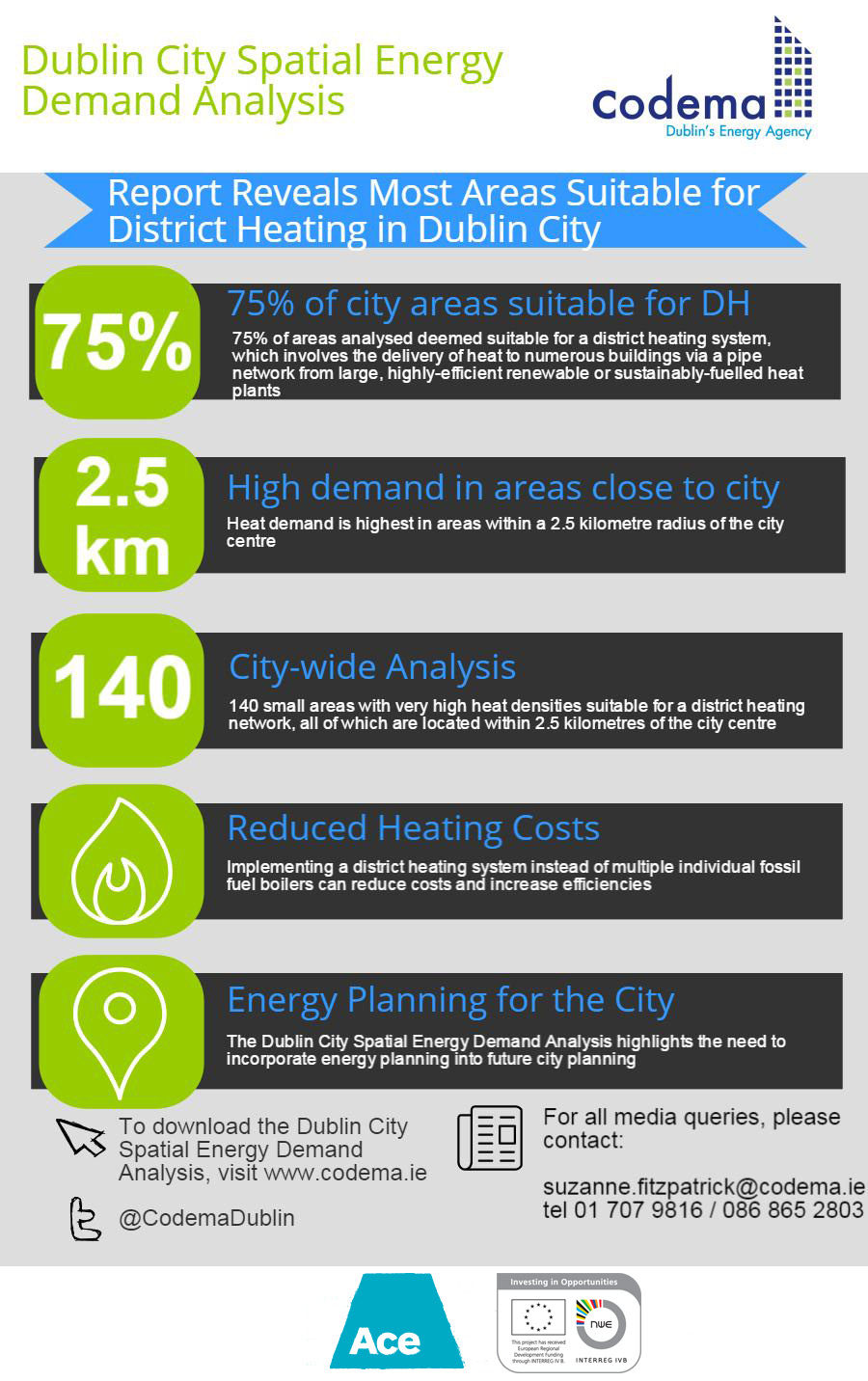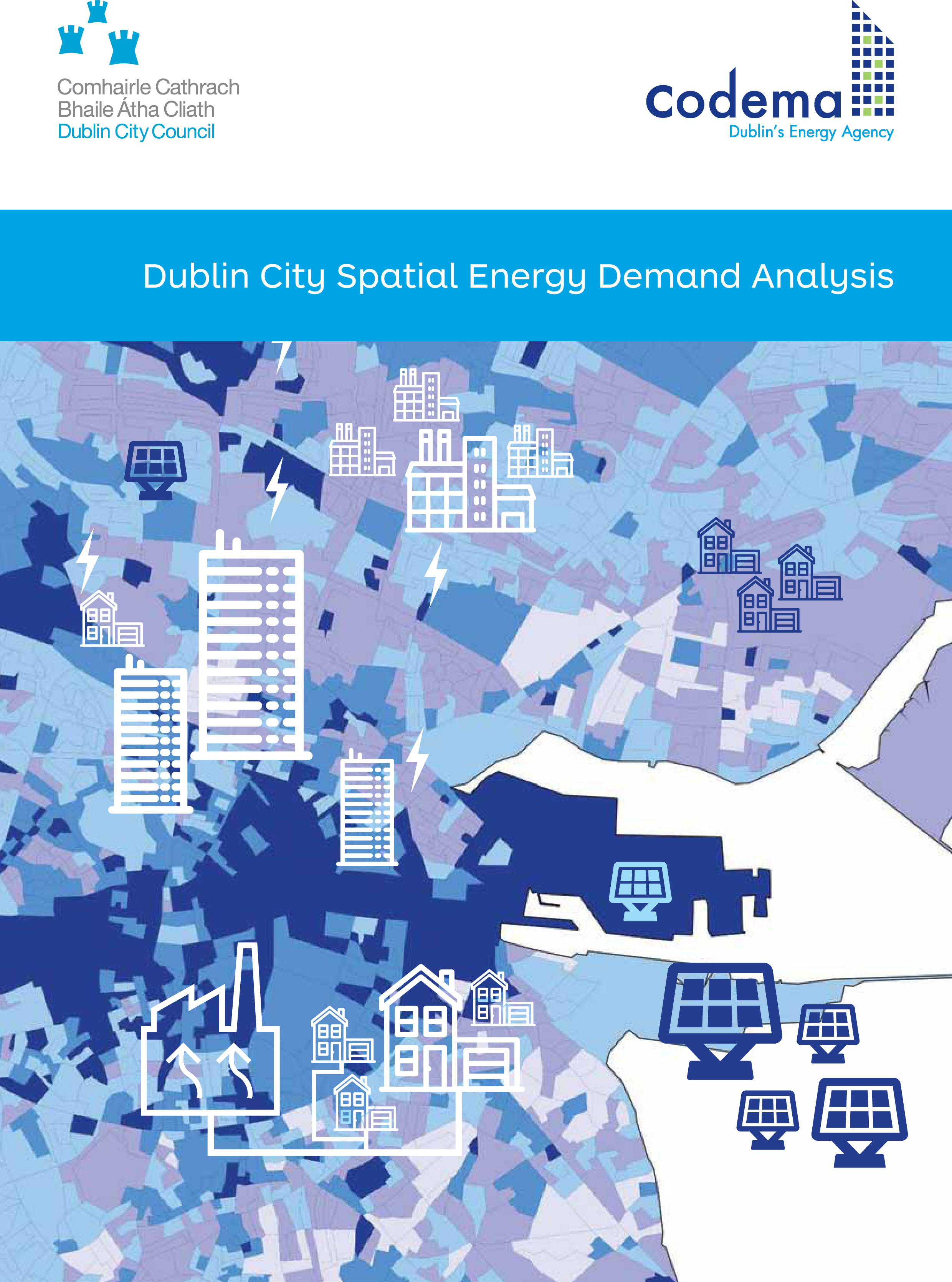In 2015, Codema published the first Dublin City Spatial Energy Demand Analysis (SEDA) for Dublin City Council, the first of its kind to be delivered in Ireland at city-level.
 The SEDA involves the mapping of local energy demand and matching it to the best local resources, to help deliver the most sustainable solutions for energy consumption both now and in the future.
The SEDA involves the mapping of local energy demand and matching it to the best local resources, to help deliver the most sustainable solutions for energy consumption both now and in the future.
By using this SEDA energy model, Dublin City Council is better placed to make decisions about how energy will be provided for in the city. It also, however, presents opportunities to help them deliver energy and CO2 savings, in line with EU targets.
“Many houses in the city are using old, inefficient heating systems which are due to be replaced. By implementing a district heating system instead of multiple individual fossil fuel boilers, heating costs can be much lower and it can enable the easier integration of renewable energy and waste heat sources into the heating systems of these homes. A large-scale district heating system which is initially set up around the largest commercial users within the city centre can easily expand to nearby residential areas.” – Donna Gartland, Codema’s Strategic Sustainable Energy Planner, on the benefits of introducing a district heating network in the city.
The research referred to, analysed and mapped the results of over 200,000 households, 20,000 commercial properties and 1,000 local-authority energy accounts across the city. Thus, for the first time, this report was able to provide detailed information in respect of more than 2,000 small areas of Dublin city, on each of the following:
- Total Energy Demand
- Total Heat Demand
- Heat Demand Density
- Total Electricity Use
- Total Fossil Fuel Use
- Total Annual Energy Costs
- Average Building Energy Ratings (BERs) in each area
- Areas at Risk of Fuel Poverty
As a result of this mapping and analysis exercise, each area could now be visually mapped to highlight urgent issues and identify solutions found.
Click here if you would like to access the data from this project
The key findings of this research included
- The total energy demand of the residential, commercial and municipal sectorsin Dublin, including a detailed visualisation of areas in the city where heat demand, electricity use and fossil fuel use, are particularly high. As a result, targeted solutions could now be identified and developed for these specific locations
- A detailed analysis which identified over 75% of areas in the city as suitable for district heating showed that with three-quarters of energy used in all the buildings analysed directly attributed to heating, there is a huge opportunity to reduce our reliance on fossil fuel use, through the provision of a citywide district heating system
- The identification of areas most at risk of energy poverty in Dublin City can help local decision-makers to prioritise these areas for retrofitting
- The suitability for renewable resourcesand the potential for solar energy production in the city is enormous; for example, just 1m2 of solar photovoltaic (PV) installation on all houses and bungalows in Dublin city would provide 20% of the average household’s electricity requirements – saving €250 per household, per year on electricity bills
- A detailed BER (Building Energy Rating) analysishas highlighted the huge number of dwellings in the city with poor energy ratings. Again, by knowing where energy efficiency shortfalls arise, policymakers are better placed to prioritise budgets and efficiencies
Codema will be working with Dublin City Council in 2016 to provide a deeper analysis of heat demands in the Docklands area, with a view to implementing the city’s first large-scale district heating network. Once fully implemented, this district heating network will reduce the use of fossil fuels for heating in the Docklands area, by around 90% (a saving of at least 120-megawatt hours per year) by using waste heat rather than imported natural gas.
